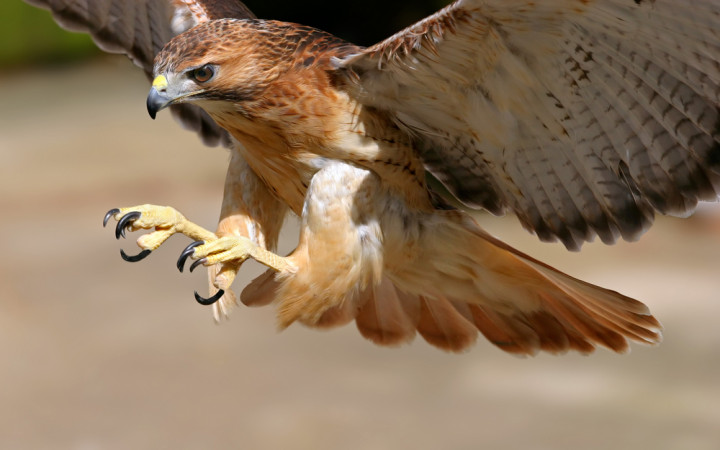Today’s Wonder of the Day was inspired by Debbi. Debbi Wonders, “What kinds of raptors are there?” Thanks for WONDERing with us, Debbi!
If you've ever seen the movies Jurassic Park or Jurassic World, then you probably already have a mental image of what a "raptor" looks like. Would you believe there are real raptors flying the skies today? It's true! Oh, and don't believe everything you see in the movies…
The word "raptor" comes from the Latin word rapere, which means "to seize or take by force." Raptor is a general term used informally to refer to all birds of prey.
Bird enthusiasts occasionally limit their use of the term "raptor" to refer to birds of prey who hunt during the day. This separates them from nocturnal birds of prey, like owls.
Birds of prey are those birds that hunt for food from the air. They have exceptional sight that allows them to spot prey from a great distance. In fact, birds of prey have the keenest eyesight in nature with rapid focus and superior depth perception.
Some examples of birds of prey include hawks, vultures, falcons, condors, and eagles. They tend to have large curved beaks and sharp talons that are very powerful.
They use these body parts to catch, kill and tear off the flesh of their prey. Their talons allow them to pick up and carry prey great distances, while their sharp beaks are perfect for tearing off bite-sized pieces.
Most birds of prey hunt for vertebrates (animals with backbones) that can include mammals, fish, or other birds. Often, the prey can be quite large compared to the size of the bird. Most raptors, especially vultures and condors, also eat the carcasses of dead animals — called carrion.
Their predatory lifestyle puts raptors at the top of the food chain. Unfortunately, this means that raptors are sometimes endangered species, because they struggle to survive when food is difficult to find.
So what about those dinosaur raptors that made the Jurassic Park movie series such a success? As it turns out, Velociraptors were indeed real dinosaurs. However, they didn't look or behave exactly like the way the movies portrayed them.
Where the movie raptors had skin like lizards and were extremely smart, paleontologists would tell you that these types of dinosaurs — called dromaeosaurs — were much smaller (the size of children), about as smart as the average hummingbird and most certainly were covered in feathers.
Paleontologists have found fossilized remains of Velociraptor mongoliensis in Mongolia. From their study of these remains, they know that the moviemakers definitely used a little Hollywood magic to create a creature that was quite a bit different than the real-life dinosaurs that lived over 70 million years ago.




